Alabama Illustrated: Engravings from 19th Century Newspapers
In the nineteenth century many Americans received news and learned about the
world beyond their home towns by readings illustrated newspapers. Prior to the
1890s, the technology did not exist to economically publish photographs in
newspapers, so some publishers employed artists to draw and engrave images.
Newspaper engravings provide a valuable but imperfect view of the past. An
artist in the field made a preliminary sketch and often added notes. Sometimes
that artist would finish the drawing later from notes or memory, or it was
completed by a different artist at the newspaper's offices. Other engravings
were copied faithfully from photographs while some were drawn from the artist's
imagination based on eyewitness accounts or news reports. Once the paper sketch
was completed, another artist copied the paper drawing in reverse onto an
engraving plate, usually made of wood or copper. For wood engraving, artisans
cut away the blank spaces with a knife or other tool, leaving a raised image.
Wood plates worked well in the printing presses of the time and one plate could
be used to print thousands of images. For copper plates, an artist incised the
image into the surface of the copper using a steel tool called a burin. For
large or complex engravings, several engravers divided the printing block into
sections with each working on a different part.
From the 1850s to the 1890s, more than 250 engraved images of Alabama were
published in national and international illustrated newspapers. This digital
exhibition includes a sampling of illustrations and articles from four 19th
century newspapers:
Harper's Weekly and Frank Leslie's Illustrated Newspaper, both
published in New York;
Ballou's Pictorial, published in Boston; and The Illustrated London
News, a British publication. The images included here are typical of those
published for many places. They include portraits, landscapes, cityscapes and
events such as storms, parades, sports and work.
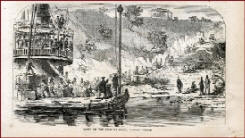
'Loading Cotton on the Alabama River'
Ballou's Pictorial, November 28, 1857
The spirited scene on this page was sketched expressly for us upon the spot by
Mr. Killburn, and is a correct representation of the manner of loading cotton on
board the steamboats... (read
the rest of this article)

'The Alabama State Fair'
Harper's Weekly, November 27, 1858
The Fourth Annual Fair of the Alabama State Agricultural Society was
held in Montgomery, the capital of the State, between the 1st and 6th days of
November, 1858. ... (read
the rest of this article)

'President J. Davis's Inauguration at Montgomery' Harper's Weekly,
March 9, 1861
On page 157 we publish a picture of the Inauguration of President Davis, of the
Southern Confederacy, at Montgomery, Alabama, on February 18, from a
photograph... (read
the rest of this article)
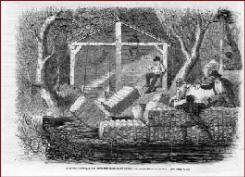
'Loading Cotton on the Alabama River'
Illustrated London News, May 4, 1861
Our Number of April 13 contained some Illustrations of the methods of conveying
cotton in India to the ports of shipment; and we follow up the subject-of
special interest at the present... (read
the rest of this article)
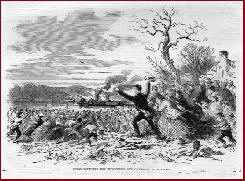
'The Union Expedition up the Tennessee River'
Harper's Weekly, March 1, 1862
On this page we illustrate the Welcome of the Union men in Tennessee and Alabama
to the gunboats which ascended the Tennessee River, after the fight at Fort
Henry. ... (read
the rest of this article)
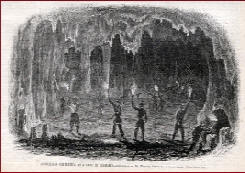
'War in North Alabama'
Harper's Weekly, August 16, 1862
We illustrate on pages 513 and 518 some interesting scenes of General Mitchell's
campaign in North Alabama. ... (read
the rest of the article)
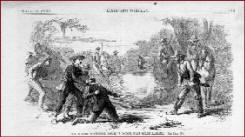
'The Murder of General Robert L. M'Cook' Harper's Weekly,
August 23, 1862, p. 530
We illustrate on page 541 the brutal and
coldblooded murder of General Robert L. M'Cook, who was assassinated by
miscreants calling themselves guerillas... (read
the rest of the article)
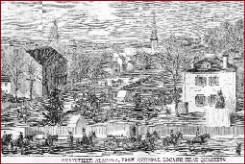
'Huntsville, Alabama' Harper's Weekly, March 19, 1864
This town, which is now the head-quarters of General Logan, and a sketch of
which we give on page 188, is the only one in the South that I have visited,
says our correspondent... (read
the rest of the article)

'Mobile and its Defenses' Harper's Weekly, March 26, 1864
We give on page 204 an illustration showing the position of the Federal fleet
off the harbor of Mobile, together with the defenses of the harbor. ...(read
the rest of the article)
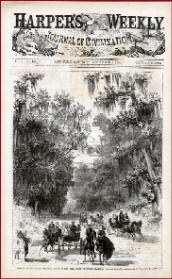
'Mobile' Harper's Weekly, September 8, 1866, p. 566
This city is so thoroughly uninteresting that your artist made but one sketch
there. That was the picture of the Magnolia Avenue on the Shell Road-or rather
what is left of it... (read
the rest of the article)

'Illegal Still in Alabama'
Harper's Weekly, March 2, 1867
It being generally imagined that whisky is one of the necessaries of life, it
could hardly be expected that the chivalric native of the South should deprive
himself of the inebriating fluid. Now to buy whisky that has paid a profit to
half a dozen dealers is more expensive than brewing it. Then the aforesaid
native has a constitutional objective to government taxes, and a large one is
gathered from the sale of spirits. Hence the still carries on contraband
distillation in many a quiet nook of the Southern States. The sketch is from one
of these.